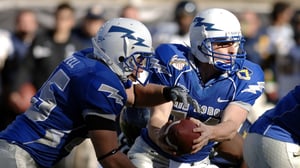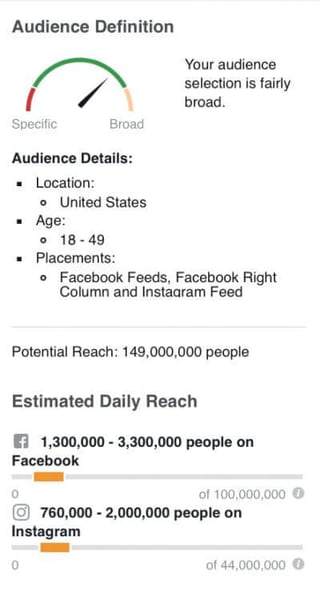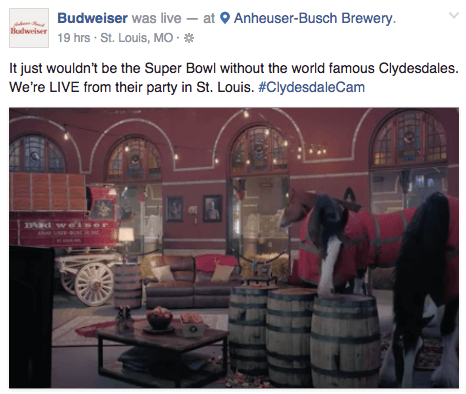
Social Media vs. Traditional TV: Super Bowl Ads Showdown
Even in the cord-cutting era, the Super Bowl’s reach is unparalleled, not only in the world of sports, but in all of broadcast TV. This year Fox was selling 30-second ad slots for a whopping $5 million - arguably making the Super Bowl the world’s biggest advertising platform. But traditional TV wasn’t the only place Super Bowl ads could be seen this year, as brands are becoming more and more creative with the content they’re serving across screens – particularly on Facebook.
In this ad-intolerant landscape, consumers still look forward to Super Bowl ads
Many brands are now choosing to release teaser versions of their Super Bowl ads on social media before game day. This could help to drive additional engagement, as according to a recent study, 43% of people actively seek out the best Super Bowl ads during and after the big game.
When it comes to watching Super Bowl ads on social media, the study also found that 93% of viewers prefer to watch on YouTube (YouTube reported its highest ever watch time during this year’s game, with more than 350k hours spent watching Super Bowl ads, marking over 15 percent year-over year-growth), in addition to the 51% of people that watch Super Bowl ads on Facebook.

As Facebook and Google (owner of YouTube) have both continued to exercise their preeminence over the digital advertising market in recent years, it was only a matter of time before one made the daring move on the $70 billion traditional TV ad market. Well, Facebook has made that move, as seen with the increase in Facebook Live sessions that aired during Super Bowl LI.
It was recently reported that Facebook, as part of its effort to become a “video-first” company is also now in talks with media companies to purchase professionally produced, TV-quality content. Facebook also recently announced they’re looking to provide advertisers with more data and tools to help them realize the effectiveness of their ad spending on Facebook compared with traditional TV. If the company decides to apply its valuable data – like people’s names, where they live and what they like to do, to TV advertising – it’s game on.
Is the Super Bowl the world’s biggest advertising platform?
Already, some brands don’t think the price tag for a traditional TV Super Bowl ad is as valuable as other channels, such as Kristopher Jones of LSEO.com, who told Forbes:
“The Super Bowl is not the ultimate advertising platform of all time; Facebook Ads is. The average cost of a 30-second ad for this year's Super Bowl is estimated at over $5 million. Outside of an interest in watching the Super Bowl, the audience will be diverse and not targeted. In contrast, with million on Facebook Ads, you can directly target the exact audience that converts into new customers”
AdAge attempted to prove this point by testing what would happen if they were to spend a $5 million Super Bowl budget on Facebook. They discovered they could target upwards of 5 million people every single day for 11 months. And while last year’s Super Bowl brought in 111.9 million viewers, according to Facebook’s forecasting tool, a brand spending $5 million on Facebook ads could translate to a reach of 149 million.

Super Bowl advertising can be very impactful and drive a lot of continued brand buzz, but only if you think of the media buy beyond the TV screen. Make sure your plan includes how to bring the experience to life in real-time on social media and digital marketing so you’re leveraging on the engagement from all channels.
Creativity conquers social media advertising during Super Bowl LI
Snickers aired the first-ever live commercial in Super Bowl history on Facebook LIve. The 30-second spot was followed by a 36-hour live stream of the behind-the-scenes set of the commercial itself. The feed featured celebrities like Betty White and Adam Driver, who also starred in the TV spot. But even then, brand director Allison Miazga-Bedrick didn’t expect 500 people would simultaneously tune in to watch stock footage, she told Campaign.
Over the past couple of weeks, KIA Motors America has released a few teasers on Facebook for their full-length commercial. Then during the Super Bowl they aired the complete commercial for the 2017 Niro through NiroBot, its chatbot for Facebook Messenger that presents information through automated conversation. Now that the full video has aired KIA is utilizing NiroBot to communicate with KIA Page visitors and prompt them to enter into a post Super Bowl giveaway.

WIX kicked off the Super Bowl season by announcing the creative for their commercial using Facebook Live, the first time a brand launched a Super Bowl campaign this way. During the Facebook Live event, Wix also announced a Super Bowl contest where they offered up to $50,000 for fans who changes their Facebook profile picture to an image of Felix (the star of the commercial, well, other than Jason Statham).
Budweiser hosted a Facebook Live video showcasing the famous Budweiser Clydesdales having their own Super Bowl viewing party in their stables at the Anheuser-Busch Brewery Stables in St. Louis during the game on the #ClydesdaleCam. Over 16,000 people were concurrently watching the stream even before the official Budweiser ad aired in the second quarter. When the stream was mentioned live during the game, that number spiked to more than 28,000.

Similarly, brands like Hidden Valley and Buzzfeed hosted live streams during the game.
Breaking the traditional TV mold is imperative now thanks to social media
The recent advancements in live video on social media played a large role in the desire to extend real-time messaging to the Super Bowl.
"This trend has a lot to do with Facebook Live," Kirsten Atkinson, VP-media and brand integration at Walton Isaacson told AdAge. "The social media space pushed advertisers to find unique ways to engage. This bled into the traditional space and begs the question, why wouldn't we be doing this in broadcast?"
What we're seeing in Super Bowl LI is the beginnings of that kind of mold-breaking thinking stepping into the most traditional of formats – TV spots during a sports game.
So which platform will ultimately prevail in the battle for Super Bowl ad dollars? We’ll have to see what happens next year during Super Bowl LII...
